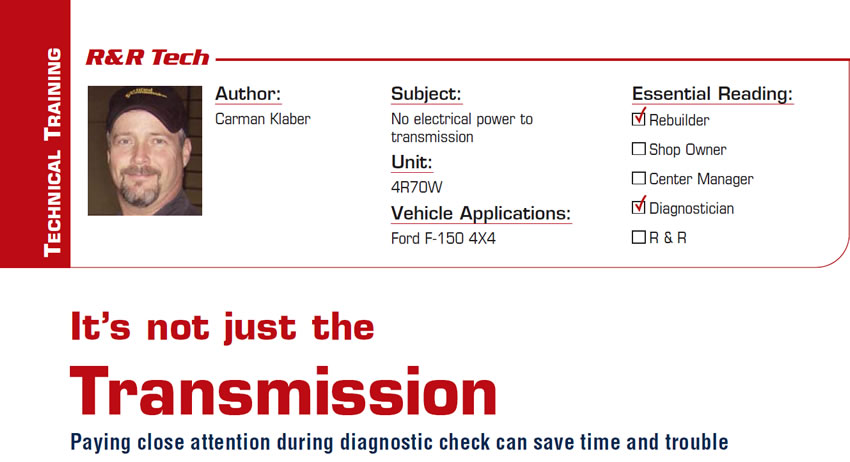4L60-E EC3 TCC Control and Adapt
While I was helping a co-worker repair a TCC slip, we analyzed some graphs and noticed some interesting info on how the PCM behaves and how it “sees” and adapts for a TCC slip.
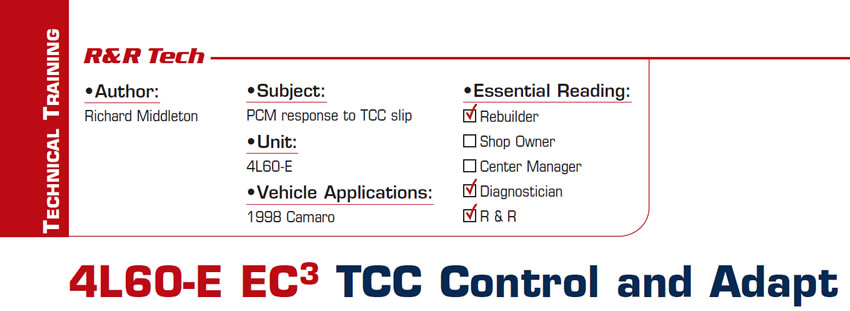
Getting (and Staying) Connected
Being the technical director for the valve-body and solenoid department, I’ve seen more than my share of errors and mistakes that people have made while working with automatic transmissions. The majority involve electrical components, most of them involving the connectors in some way. Often damage to a connector is done during the disconnection process. We’ve all been told not to wiggle a connector to get it off because it can expand the pin cavities in the connector and cause the pins to have poor or no connection when the connector is plugged back in; for example, in Chrysler 604s.
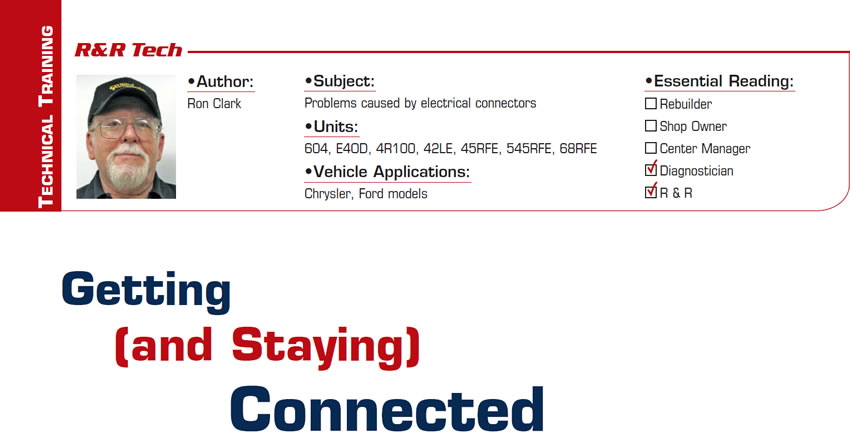
Listen to the Customer
The customer brought his 2005 Ford Taurus to our shop with a complaint of an intermittent jerk at highway speeds. The customer had gone through the trouble of documenting the times that this jerk appeared, the temperature at which it occurred and under what driving conditions he was feeling the intermittent condition. He also told me that another shop had recently rebuilt the transmission. I took the time to listen to him and to ask several follow-up questions that would help me correctly identify the problem. It occurred only once every couple of days.
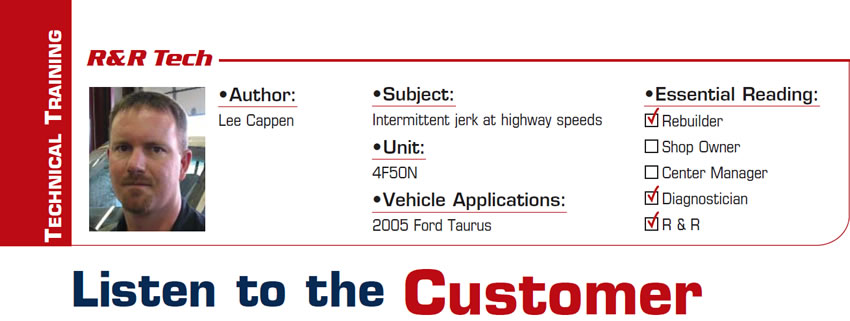
Shining Some Light on the Problem
A 1996 Nissan 300ZX came into the shop last summer. Remember, I said it was summer, which affects this story later.
The customer said the check engine light was on and that at times the transmission would not shift into fourth gear. I scanned the computer and found a P0705 inhibitor-switch code. I cleared the code and went for a test drive with the scan tool connected. Inhibitor-switch data was correct, and the code did not reset.
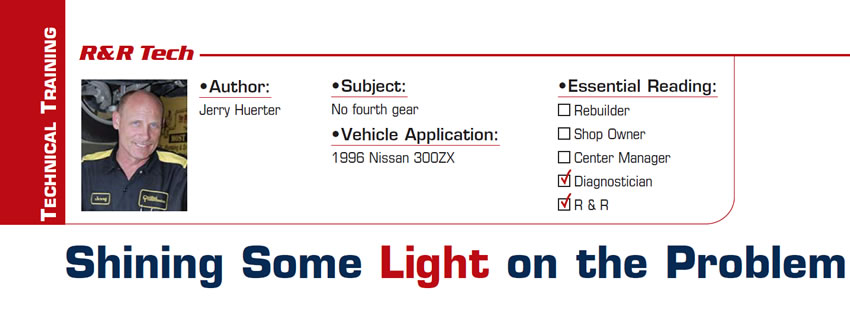
No-Reverse Complaint Presents Diagnostic Challenge
As I read about the operating strategy of the solenoids, I learned that the PCM commands solenoids A, B and E (Figure 1) when reverse gear is selected. Now I could see that solenoid E has an important role in reverse-gear engagement, and I was starting to think I had cleared at least one hurdle. If solenoid E is inoperable, oil will not be directed to engage reverse. I was now certain that I had found a common link to the problems that the owner experienced.
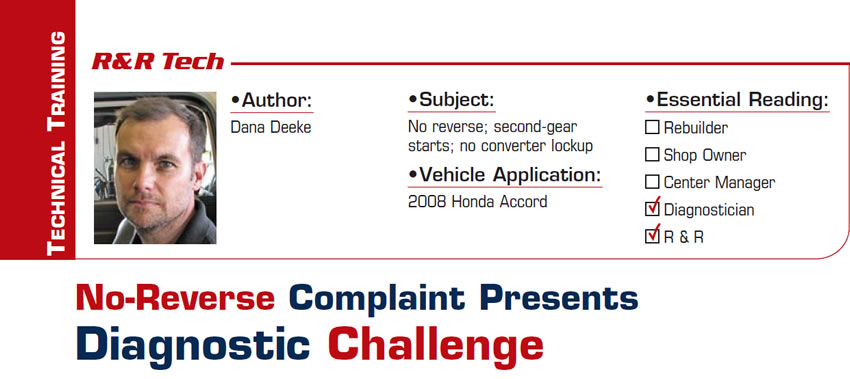
604 Solenoid-Block Mystery Leaks
The 604/41TE has been around for some time and we are all pretty familiar with it; however, some things still pose a challenge on this transmission, and one of them is leaks.
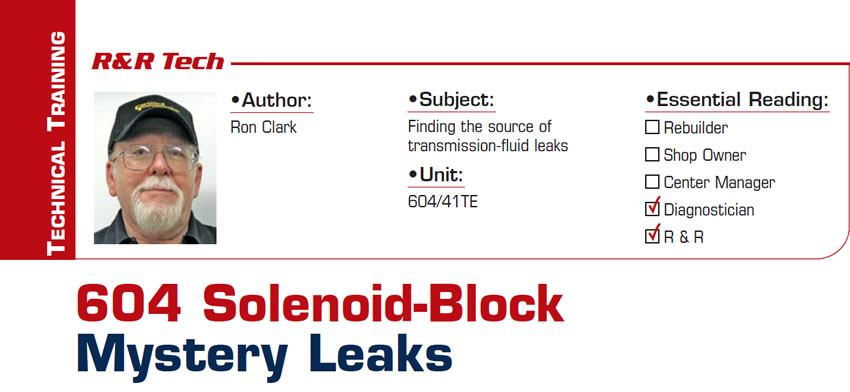
‘New’ Does Not Equal ‘Good’
Diagnosis is a challenge for any shop. Sometimes things can get even more complicated because of a previous repair, or a part that has been replaced recently. This case involves both of these scenarios. After all, we really want to believe that a new part is a good one, right?
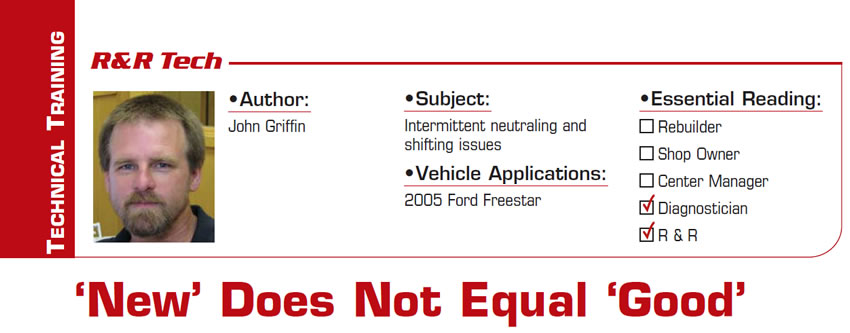
A Case of Mistaken Identity
Those of us in the business have seen all different kinds of oddball installations and strange diagnoses that make absolutely no sense. There are so many variables that can contribute to a problem, and finding the root cause is an ongoing challenge for all of us. To complicate things even further, if you don’t have the background story on the vehicle you’re trying to fix, you’re working with assumptions that can easily get you into trouble. This story is an example of one such repair challenge.
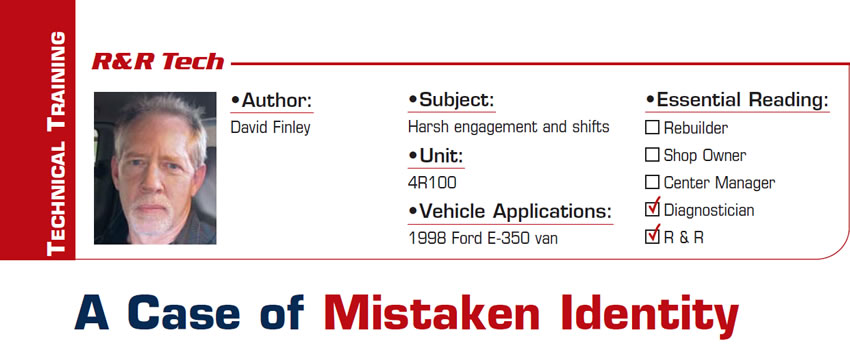
5R110W Filter Change
Until mid-2008 Ford trucks equipped with a TorqShift transmission, otherwise known as the 5R110W, came from the factory equipped with an inline filter installed in the cooler lines. In most instances this filter is a replaceable element inside a canister in the cooler lines (Figure 1). This requires the technician to remove the canister and replace the filter element after a flush service or a transmission replacement, at a cost of about $8 for the filter element.
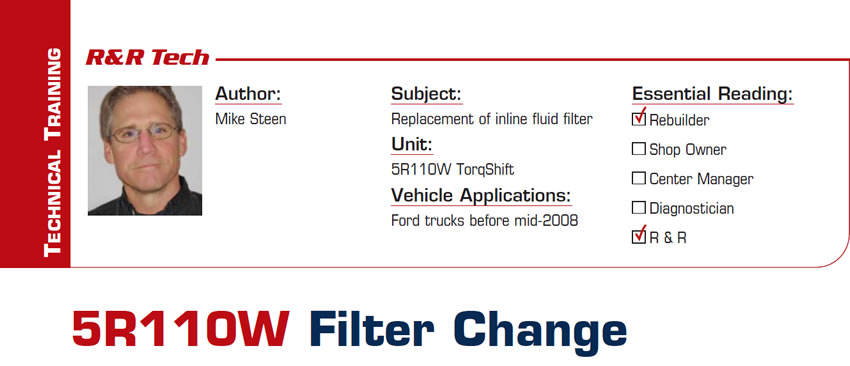
Back to the Basics: Strategy-Based Diagnosis
Later that day they showed up to drop off the car, a 2002 Volkswagen Jetta GLS with 72,000 miles (Figure 1). The owner of the car started to explain the concern he was having: “Everything was working great, then one day the check engine light came on and it started to shift real hard and fast. I took it to (shop A) and they said it was either the transmission control module or the transmission. If it was the module, it was going to be $2,000; if it was the transmission, $5,000 plus reprogramming and any wire repairs; or it could need both. I paid them $145 for looking at it, but I wanted to get a little more specific about what it was going to cost, so I took it to (shop B); they had it for a week and said they thought it needed a control module but were not real sure and asked me to take it somewhere else, so here I am.”
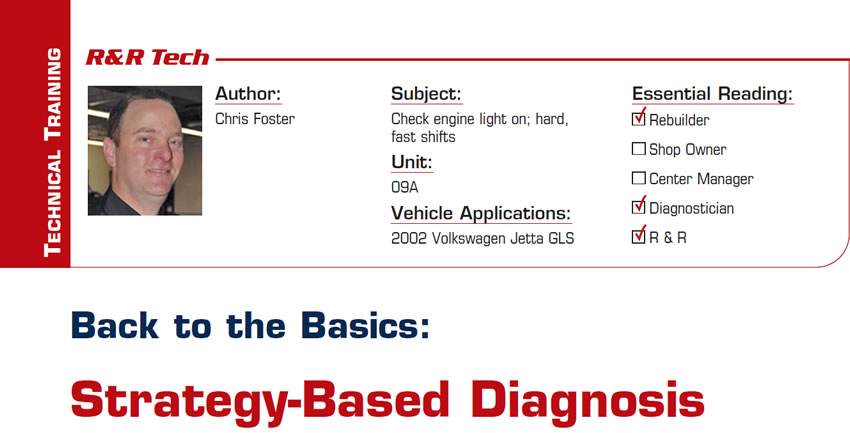
Don’t Forget the Basics
Instead of choosing just one success story that applies to one vehicle, how about writing something that applies to all vehicles? The thought that I want to convey is to pay attention to the simple things and small details alike, both when diagnosing a problem and when removing and reinstalling a transmission.
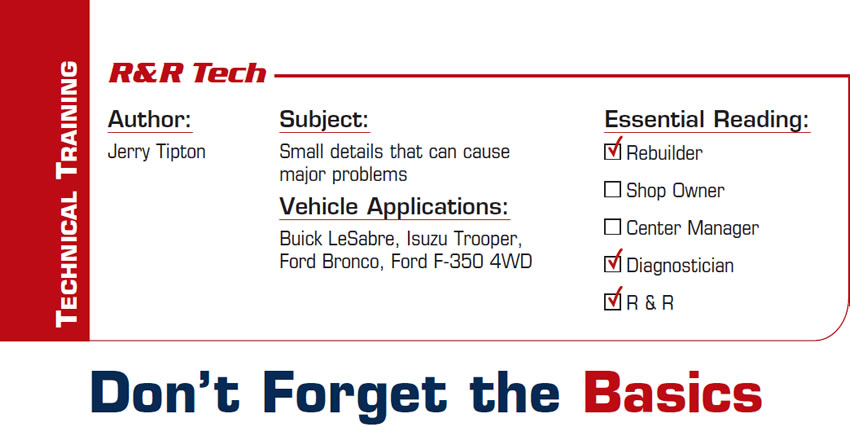
It’s not just the Transmission
Recently a customer called to get a quote for a 1998 Ford F-150 4X4 with the 4.6-liter V-8 engine and 4R70W transmission. The price was given and we had one in stock. A couple of days later they called and told us they needed the transmission. It was still in stock, but it was late in the day so we made arrangements to deliver it to them the next day.
